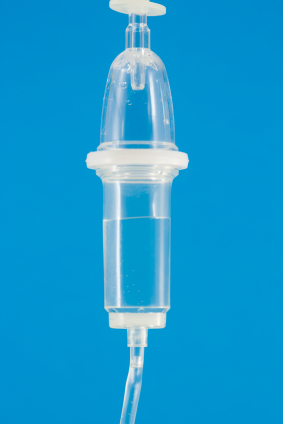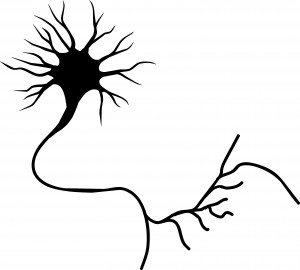Family History Of Alcoholism Predicts Positive Response To Ketamine
 The drug ketamine can bring about antidepressant effects rapidly when given intravenously, but these effects last only a few days. In a recent study, bipolar depressed patients with alcoholism or a family history of alcoholism in first-degree relatives had a more extended positive antidepressant response to IV ketamine than those without this history, and fewer adverse effects from the treatment. The study, published by David Luckenbaugh et al. from the National Institute of Mental Health in the journal Bipolar Disorders in December 2012, replicates similar findings in patients with unipolar depression, where positive family history of alcoholism also predicted better response and fewer adverse effects from IV ketamine.
The drug ketamine can bring about antidepressant effects rapidly when given intravenously, but these effects last only a few days. In a recent study, bipolar depressed patients with alcoholism or a family history of alcoholism in first-degree relatives had a more extended positive antidepressant response to IV ketamine than those without this history, and fewer adverse effects from the treatment. The study, published by David Luckenbaugh et al. from the National Institute of Mental Health in the journal Bipolar Disorders in December 2012, replicates similar findings in patients with unipolar depression, where positive family history of alcoholism also predicted better response and fewer adverse effects from IV ketamine.
Alcohol and ketamine have a common mechanism of action. They are both antagonists of the glutamate NMDA receptor, meaning they limit the effects of glutamate, the major excitatory neurotransmitter in the brain. This suggests a theoretical explanation for why a history of alcoholism might relate to ketamine response.
Editor’s Note: Family history appears to be linked to how patients respond to different mood stabilizers. Lithium works best in those patients with a positive family history of mood disorders (especially bipolar disorder). Carbamazepine works best in those without a family history of bipolar disorder among first-degree relatives. Lamotrigine works best in those with a positive family history of anxiety disorders or alcoholism.
Drugs that are effective in patients with a family history of alcoholism all target glutamate in the brain. Lamotrigine decreases glutamate release, while ketamine reduces glutamate’s effects at the receptor. Both decrease glutamate function or activity. Like lamotrigine, carbamazepine also decreases glutamate release and has good effects in those with a history of alcoholism.
Memantine is another mood-stabilizing drug that is an antagonist of the NMDA receptor, like ketamine and alcohol. It will be interesting to see whether memantine will also be successful in those with a personal or family history of alcoholism.
Psychiatric Revolution: Changes in Behavior Are Associated with Dendritic Spine Shape and Number
New research shows that cocaine, defeat stress, the rapid-acting antidepressant ketamine, and learning and memory can change the size, shape, or number of spines on the dendrites of neurons. Dendrites conduct electrical impulses into the cell body from neighboring neurons.
Cocaine
Several researchers, including Peter Kalivas at the Medical University of South Carolina, have reported that cocaine increases the size of the spines on the dendrites of a certain kind of neurons (GABAergic medium spiny neurons) in the nucleus accumbens (the reward center in the brain). This occurs through a dopamine D1 selective mechanism. N-acetylcysteine, a drug that can be found in health food stores, decreases cocaine intake in animals and humans, and also normalizes the size of dendritic spines.
Depression
Depression in animals and humans is associated with decreases in Rac1, a protein in the dendritic spines on GABA neurons in the nucleus accumbens. Rac1 regulates actin and other molecules that alter the shape of the spines.
In an animal model of depression called defeat stress, rodents are stressed by repeatedly being placed in a larger animal’s territory. Their subsequent behavior mimics clinical depression. This kind of social defeat stress decreases Rac1 and causes spines to become thin and lose some function. Replacing Rac1 returns the spines to a more mature mushroom shape and reverses the depressive behavior of these socially defeated animals. Researcher Scott Russo has also found Rac1 deficits in the nucleus accumbens of depressed patients who committed suicide. Russo suggests that decreases in Rac1 are responsible for the manifestation of social avoidance and other depressive behaviors in the defeat stress animal model, and that finding ways to increase Rac1 in humans would be an important new target for antidepressant drug development.
Another animal model of depression called chronic intermittent stress (in which the animals are exposed to a series of unexpected stressors like sounds or mild shocks) also induces depression-like behavior and makes the dendritic spines thin and stubby. The drug ketamine, which can bring about antidepressant effects in humans in as short a time as 2 hours, rapidly reverses the depressive behavior in animals and converts the spines back to the larger, more mature mushroom-shape they typically have.
Learning and Extinction of Fear
Researcher Wenbiao Gan has reported that fear conditioning can change the number of dendritic spines. When animals hear a tone paired with an electrical shock, they begin to exhibit a fear response to the tone. In layer 5 of the prefrontal cortex, spines are eliminated when conditioned fear develops, and are reformed (near where the eliminated spines were) during extinction training, when animals hear the tones without receiving the shock and learn not to fear the tone. However, in the primary auditory cortex the changes are opposite: new spines are formed with learning, and spines are eliminated with extinction.
Editor’s Note: It appears that we have arrived at a new milestone in psychiatry. In the field of neurology, changes seen in the brains of patients with strokes or Alzheimer’s dementia have been considered “real” because cells were obviously lost or dead. Psychiatry, in comparison, has been considered a soft science because neuronal changes have been more difficult to see and illnesses were and still are called “mental.” Now that new technologies have made a deeper level of precision, observation, and analysis possible, we know that the brain’s 12 billion neurons and 4 times as many glial cells are exquisitely plastic–capable of biochemical and structural changes that can be reversed using appropriate therapeutic maneuvers.
The changes associated with abnormal behaviors, addictions, and even normal processes of learning and memory now have clearly been shown to correspond with the size, shape, and biochemistry of dendritic spines. These subtle, reproducible changes in the brain and body are amenable to therapeutic intervention, and are now even more demanding of sophisticated medical attention.
Intranasal Ketamine Helps Some Kids with Bipolar Disorder
 The anesthetic ketamine given intranasally may help children with a certain type of bipolar disorder. In an article published in the Journal of Affective Disorders in 2013, Demetri Papolos et al. reported seeing marked improvement in a subgroup of 12 children aged 6 to 19 years of age who were nonresponsive to the usual treatment regimens of lithium, mood stabilizers, and antipsychotics. Papolos has described these children as having the “fear of harm (FOH) subtype.” In addition to having typical mood swings, these children also have a fear of aggression, separation anxiety, sleep and circadian rhythm disorders, nightmares, thermoregulatory problems, and carbohydrate craving.
The anesthetic ketamine given intranasally may help children with a certain type of bipolar disorder. In an article published in the Journal of Affective Disorders in 2013, Demetri Papolos et al. reported seeing marked improvement in a subgroup of 12 children aged 6 to 19 years of age who were nonresponsive to the usual treatment regimens of lithium, mood stabilizers, and antipsychotics. Papolos has described these children as having the “fear of harm (FOH) subtype.” In addition to having typical mood swings, these children also have a fear of aggression, separation anxiety, sleep and circadian rhythm disorders, nightmares, thermoregulatory problems, and carbohydrate craving.
Ketamine was given as an intranasal spray using an inhaler in 10mg doses. Doses were increased until the targeted symptoms remitted. Average doses ranged from 30mg to 120mg, given every 3 to 7 days. All symptom areas including depression and mania improved markedly, usually within a few hours, and this improvement lasted 3 to 4 days. Four types of aggression (measured on the Overt Aggression Scale) decreased significantly.
There were some dissociative side effects that were usually mild to moderate, but occasionally severe. They resolved spontaneously, usually within the first hour after treatment, and there appeared to be tolerance to them following repeated administration.
The authors urged caution until findings from these cases are confirmed by more controlled studies, but they concluded that the magnitude and rapidity of effects in these children with treatment resistant bipolar disorder suggested effectiveness and safety.
New Drug Produces Rapid-Onset Antidepressant Effects
 We have previously summarized studies on ketamine, which when given intravenously can bring about rapid-onset antidepressant effects. Ketamine is a full antagonist (or a blocker) of the glutamate NMDA receptors. Another drug currently in development may work in a related way.
We have previously summarized studies on ketamine, which when given intravenously can bring about rapid-onset antidepressant effects. Ketamine is a full antagonist (or a blocker) of the glutamate NMDA receptors. Another drug currently in development may work in a related way.
At a recent scientific meeting, researcher Sheldon Preskorn showed that the compound GLYX-13, a partial agonist at the glycine binding site of the NMDA receptor (meaning it allows partial function of the glycine receptors that aid NMDA receptor function), exerts rapid antidepressant effects like the full antagonist ketamine when administered intravenously compared to placebo. GLYX-13 allows about 25% of the receptor activity of the full agonists glycine or D-serine, and thus might result in a 75% inhibition of NMDA receptor function.
GLYX-13 did not induce any psychotomimetic effects (like delusion or delirium), which are possible with the full NMDA antagonist ketamine. The effects of GLYX-13 appeared within 24 hours, lasted at least 6 days, but were gone by day 14.
Editor’s Note: Long-term effectiveness of ketamine for treatment of depression is unclear, but in addition to its potential psychotomimetic effects, it can also be abused. Whether GLYX-13 may be easier to use, longer-lasting, or safer for longer-term clinical effectiveness remains a key question.


